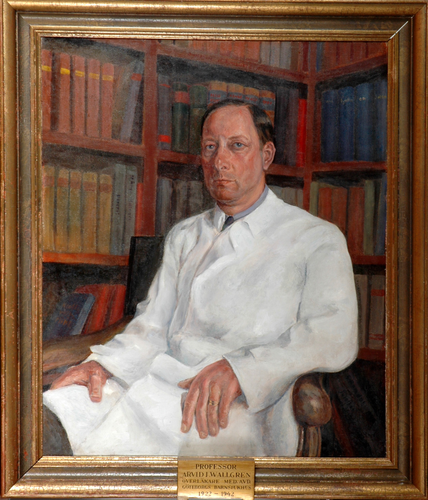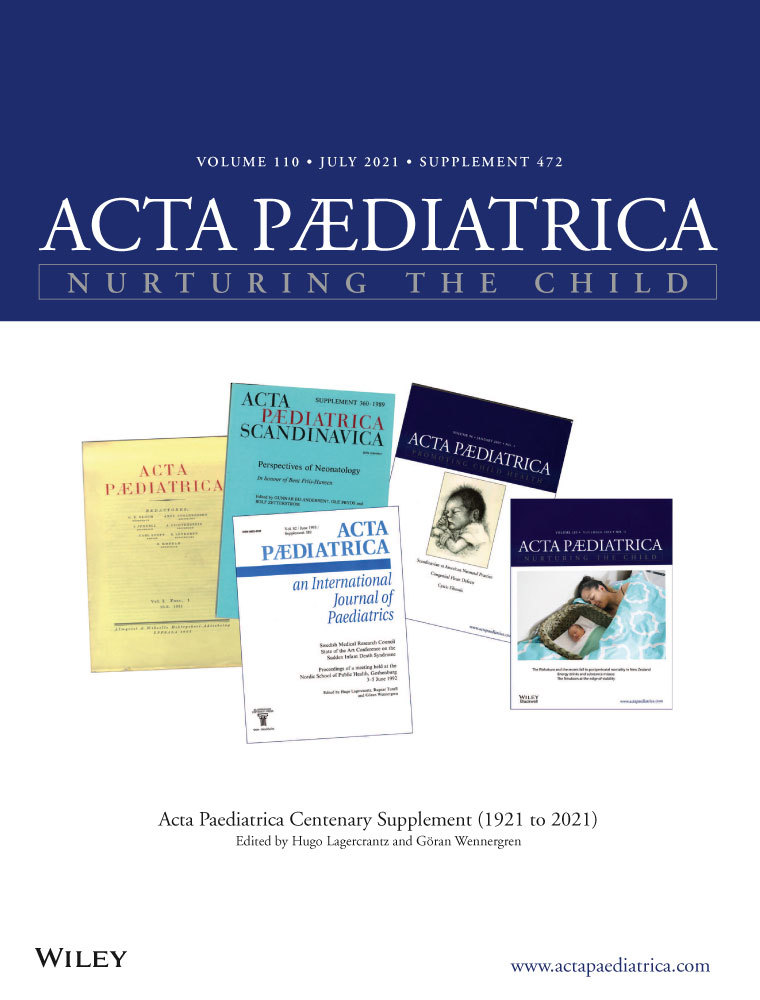Arvid Wallgren: Made important progress in the field of tuberculosis
1 INTRODUCTION
Arvid Wallgren studied medicine at Uppsala and defended his thesis on tuberculosis there. At the age of 32, he was appointed consultant physician at Gothenburg Children's Hospital. The recruitment of Wallgren proved to be quite fortunate. Wallgren developed and introduced the BCG vaccination, and he established a timetable for tuberculosis’ various manifestations. After Adolf Lichtenstein's passing, Arvid Wallgren was Acta Paediatrica's editor-in-chief for 15 years (Figure 1).

Arvid Wallgren (1889–1973) was born in Norra Råda municipality in Värmland. After schooling in Arvika, he studied at Uppsala and in 1918 he defended his thesis on tuberculosis there.1 At the age of 32, he was appointed consultant physician at Gothenburg Children's Hospital. The appointment awoke debate because Wallgren had scant paediatric experience. His paediatric training was restricted to 11 months of service at the children's clinic in Uppsala.
Behind the recruitment stood Sven Johansson who was then a consultant physician for the department of paediatric surgery at the Children's Hospital. A large portion of Johansson's practice was tuberculosis-related surgery, and he wished to have a colleague who was knowledgeable in tuberculosis as head of the paediatric department. Sven Johansson is known for his nail to mend hip fractures, which is named after him.
2 THE BCG VACCINATION
The recruitment of Wallgren proved to be quite fortunate for Gothenburg Children's Hospital. Wallgren had many strings on his lyre, but he made his most important contributions within the field of tuberculosis. Wallgren was interested in Calmette's BCG vaccination but critical of Calmette's method of giving the vaccine orally since few children became tuberculin positive. Giving the vaccine subcutaneously meant tuberculin positivity could be obtained, but the children could develop abscesses at the injection site. The Gothenburg bacteriologist Anders Wassén brought home the BCG vaccine from Paris in 1926. Wallgren's major contribution was to find the titre of a lower, but still effective, dosage and administer it intradermally, resulting in fewer side effects.2
As early as 1927, Wallgren began vaccinating infants residing in tuberculosis-affected environments. The idea was to protect children in families with tuberculosis. The BCG vaccination aims at tuberculosis diseases that follow primary infections, such as tuberculous meningitis, miliary tuberculosis and early post-primary tuberculosis of the lungs. However, the vaccination proved not to be effective against late post-primary tuberculosis of the lungs.2
Between 1943 and 1975, it was routine to give the BCG vaccine to all newborns in Sweden in the maternity hospital. It is now given only to infants in risk groups.3 Another important contribution was that Wallgren established a timeline for the various manifestations of tuberculosis.
3 RESPECT FOR CHILDREN
In the year 1942, Wallgren left Gothenburg when he was appointed professor of paediatrics at the Karolinska Institute and consultant physician at Norrtull Hospital, after which he established the paediatric clinic at the Karolinska Hospital. He was viewed as an eminent researcher and clinician and conducted popular bedside-teaching. The well-known professor of internal medicine Gunnar Birke has told that he refrained from becoming a paediatrician because there was such a throng of doctors and candidates around the children's beds. And God help whoever talked about the ‘kids’. Human offspring should be called ‘children’ and nothing else according to Wallgren. He also arranged parties during the Christmas holidays for the children and all consultant and assistant physicians at the clinic.
Together with Fanconi in Zürich, Wallgren published a comprehensive textbook in paediatrics that became a standard on the Continent during the post-war period. Wallgren had many international contacts, and it was he who invited the neonatologist Mildred Stahlman to Sweden, leading to a fruitful collaboration particularly with Petter Karlberg and his PhD students.
When Adolf Lichtenstein suddenly passed away in 1950, Wallgren—who was deputy editor—was the natural successor as Acta Paediatrica's editor-in-chief, which he was for 15 years. Submitted manuscripts were reviewed by Wallgren together with Uppsala professor Bo Vahlquist who had stepped in as deputy editor. Under Arvid Wallgren's leadership, English became the sole language of publication and the number of subscriptions increased dramatically.
CONFLICT OF INTEREST
The authors have no conflicts of interest to declare.




